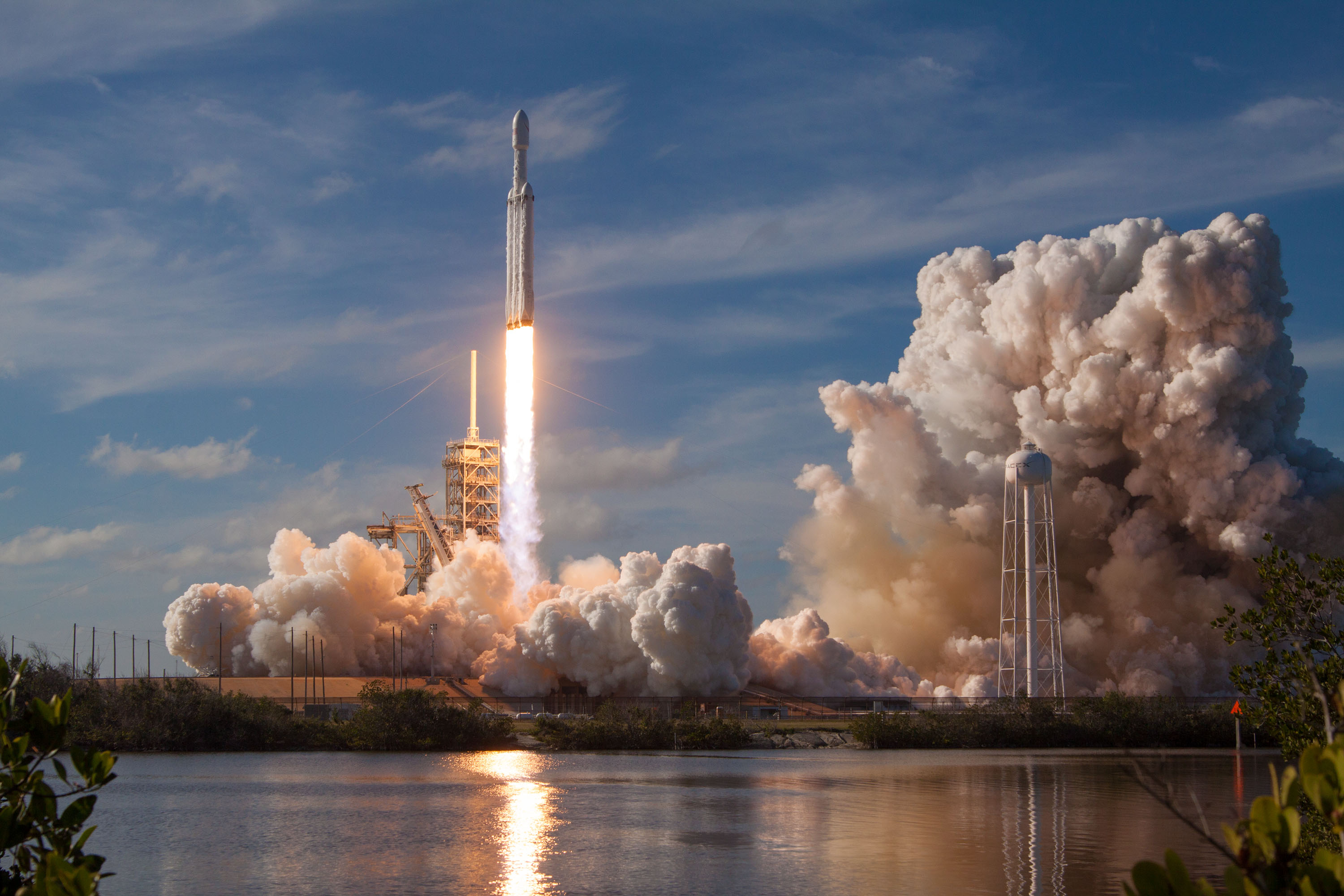If you haven't yet had OD-ed on the coverage, check out "The best photos and videos of SpaceX’s Falcon Heavy launch."
SpaceX founder Elon Musk is highly motivated to make humanity a multi-planetary species by colonizing Mars. (Yesterday's mission seems to have gone a bit off course: "Elon Musk’s Tesla overshot Mars’ orbit and is headed to the asteroid belt.") To which end (once these little navigational glitches are worked out), this recent news is very encouraging: " 'A fantastic find': Mars hides thick sheets of ice just below the surface."
 |
| Color-enhanced: blue = ice. |
And equally awesome, IMO, is this item that has been overshadowed by the aforementioned stories: "LISA Pathfinder, the gravitational wave space mission, declared a success: European Space Agency reports final results of proof-of-concept mission, ahead the most ambitious science experiment ever attempted."
LISA stands for the Laser Interferometer Space Antenna. I've several times posted enthusiastically about the wonderful LIGO (Laser Interferometer Gravitational-Wave Observatory), its 2015 discovery of gravitational waves, and a few of its event detections. LIGO is an L-shaped instrument about four kilometers on a side. LISA Pathfinder was the proof-of-concept mission for an eventual L-shaped instrument 2.5 million kilometers on a side. LISA will offer sensitivity, and visibility into astronomical phenomena, far beyond anything LIGO -- or any Earth-based instrument -- can approach.
 |
| Life imitates art |
Alas, we won't see LISA until, at the earliest, 2034. That's okay. LIGO was decades in coming, too (see Black Hole Blues and Other Songs from Outer Space).



































No comments:
Post a Comment